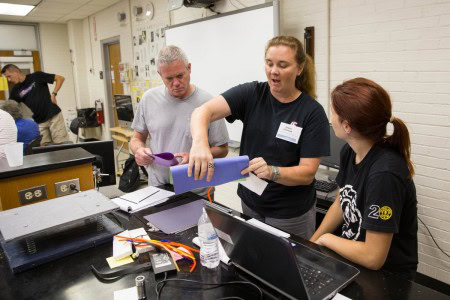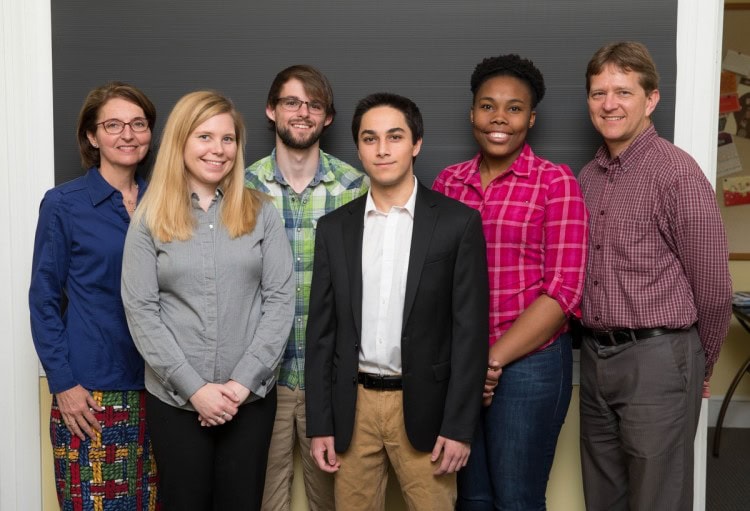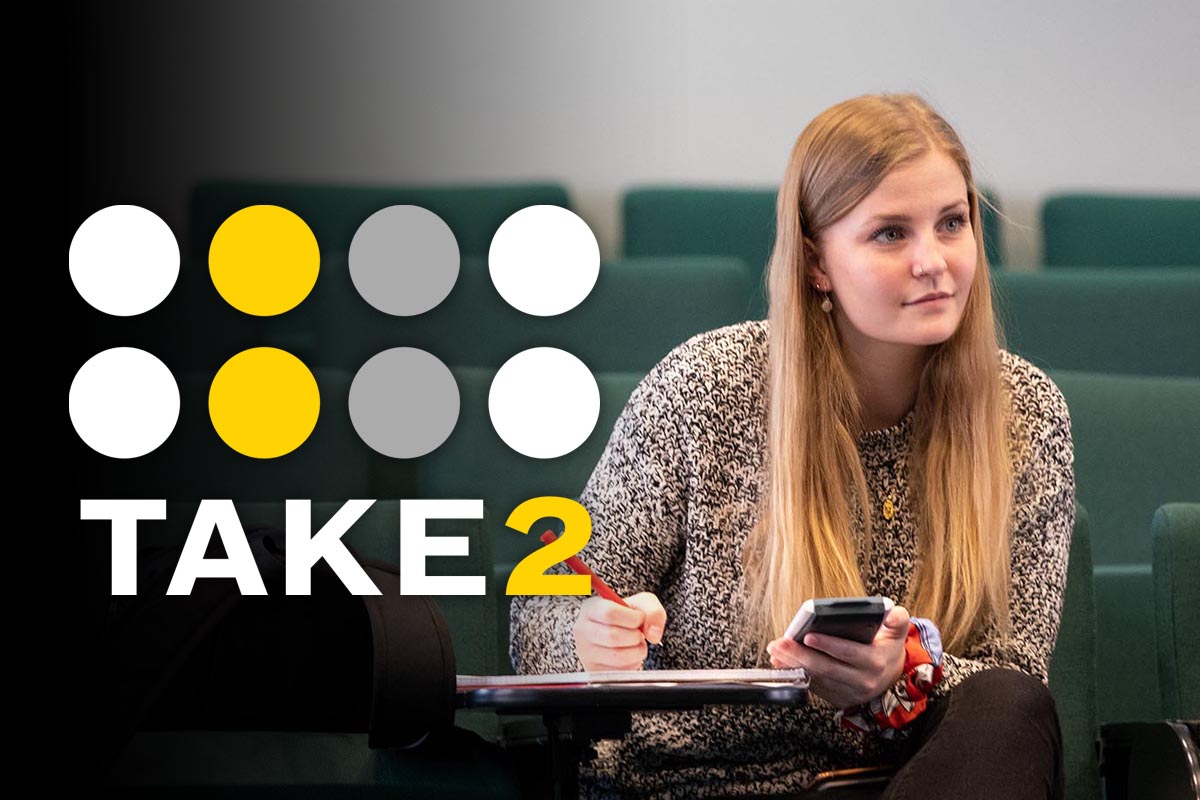Teaching the teachers

Adjunct education professor William Eggl demonstrates new techniques for teaching algebra.
As adjunct education professor William Eggl explained the final steps of the algebraic equation on the white board, one of the middle school teachers in the Martin Science Building lecture hall exclaimed, “Oh, my gosh. It’s so simple!”
Eggl was one of several Randolph faculty members sharing new instructional techniques this week at the College’s seventh “Teaching Math and Science in a Changing World” institute for 65 local elementary and middle school teachers. The popular, week-long workshop is funded by a grant from the State Council of Higher Education for Virginia (SCHEV).

Participants in Randolph’s teaching institute work together to build a structure that would be tested on the shake table.
“The teachers really like it,” said physics professor Peter Sheldon. “Sometimes they find these kinds of things tedious, but the feedback we get is that they really enjoy what we do. We’ve worked to make it something that’s valuable to teachers and a good experience for them.”
“For a lot of teachers, they have little or no training in hands-on science and math, so this is their time to learn how to incorporate those activities into their classroom,” added biology professor Amanda Rumore. “Research has shown that students who experience hands-on activities are more likely to go on to study science in college, so the earlier they can have those experiences, the better.”
This year, the institute was also the subject of a Summer Research project for Randolph students Danish Roshan ’18, Gavin Cook ’18, and Drucilla Williams ’18. The trio worked with Sheldon and Rumore, as well as education professor Peggy Schimmoeller, to prepare presentations, lessons, and activities for each session.
For one session, the students used plywood and springs to create earthquake simulators called shake tables. At the institute, teachers were challenged to build structures out of Styrofoam that would be sturdy enough to withstand the simulation.
“This year we wanted an emphasis on earth science, and these shake tables are a great way to teach kids about earthquakes,” Williams said. “I hope one day to give scientific lectures, so this is something I’m really interested in.”
In addition to the hands-on component of their project, the students are compiling data from previous teaching institutes to examine its effect on teachers and their students. They’re planning to write and publish an article about the effectiveness of a roller coaster activity designed at a previous institute in the National Science Teachers Association’s academic journal.
Roshan is enjoying the inside look at teaching and sees parallels between his physics major and education. “I really like problem-solving,” Roshan said. “There are a lot of times in physics when you’re given a question you don’t think you know the answer to. Then, you think of another way to approach the problem and find the answer, and it’s always rewarding to solve those problems and realize you know how to solve them on your own.”
A fellow physics major, Cook is considering a teaching career and is gaining insight from the experience.
“I think that teachers being more prepared to teach science will help get rid of some of the stigma of math and science at that level,” Cook said. “When I was younger, math and science classes weren’t that interesting at school, so I think what we’re doing can help make those classes more efficient, hands-on, and engaging for them and their students.”

(From left) education professor Peggy Schimmoeller, biology professor Amanda Rumore, Gavin Cook ’18, Danish Roshan ’18, Drucilla Williams ’18, and physics professor Peter Sheldon.

